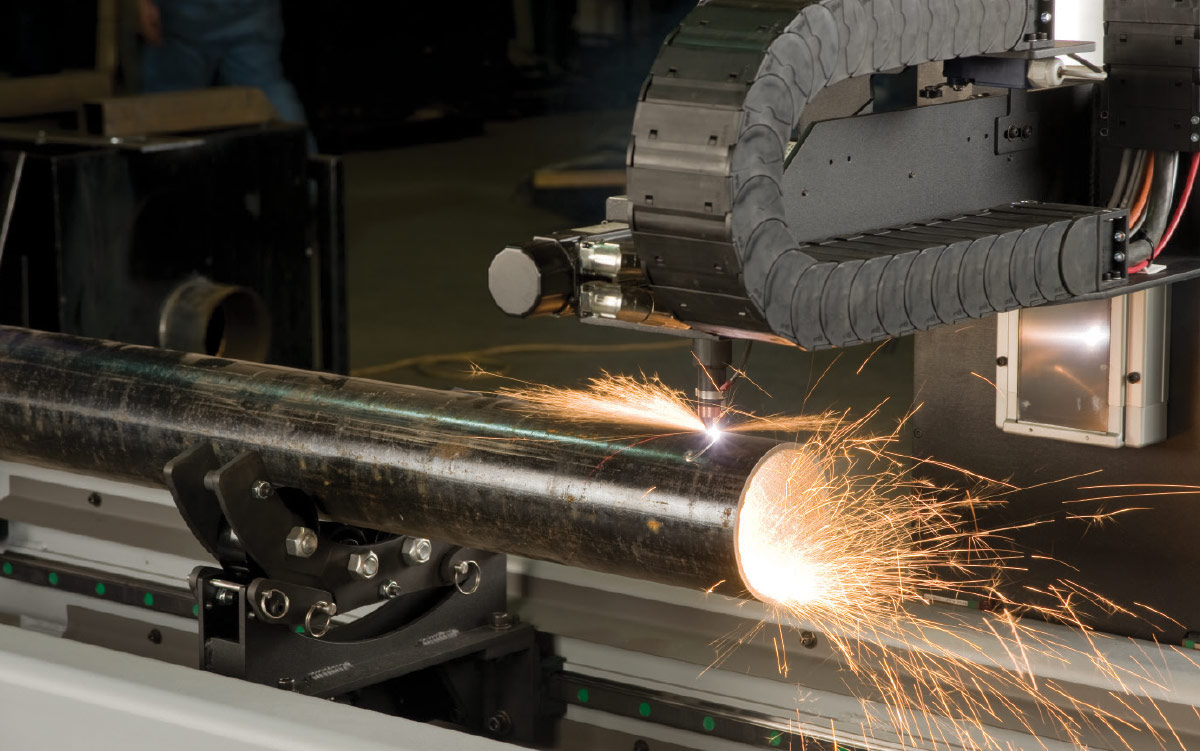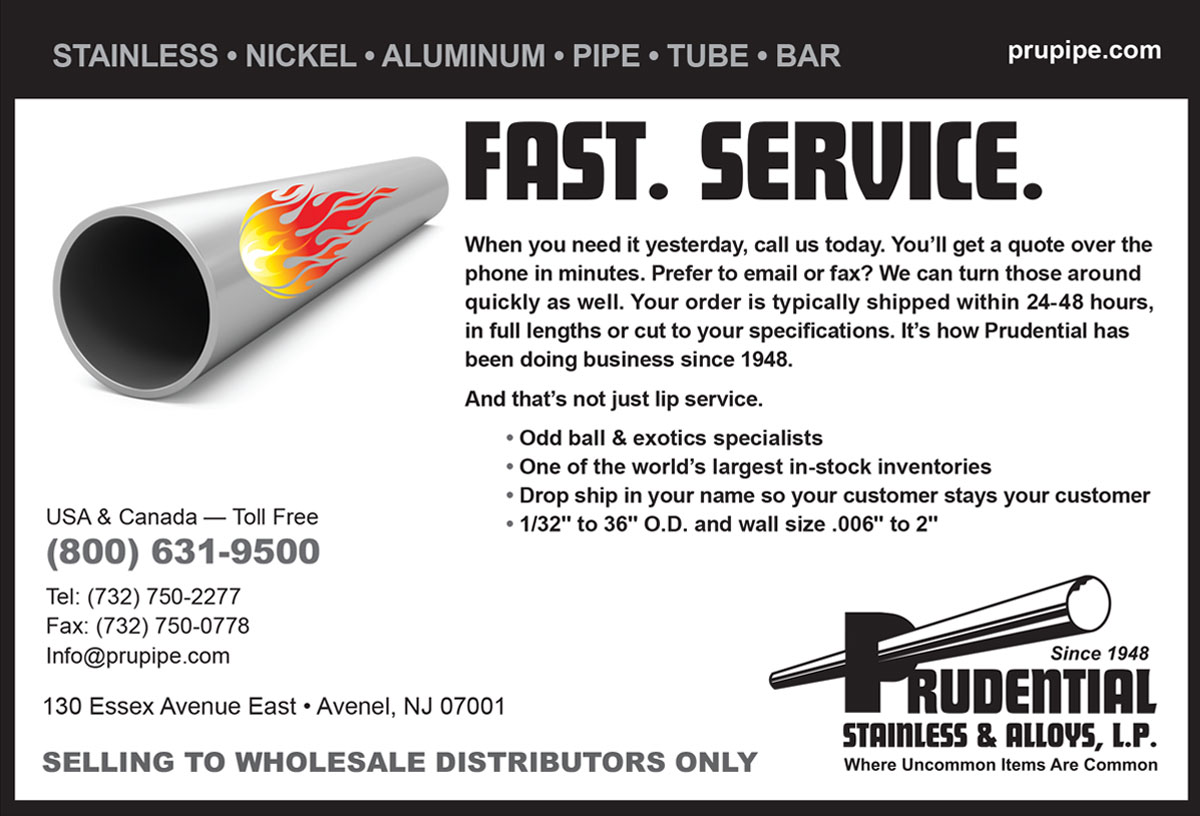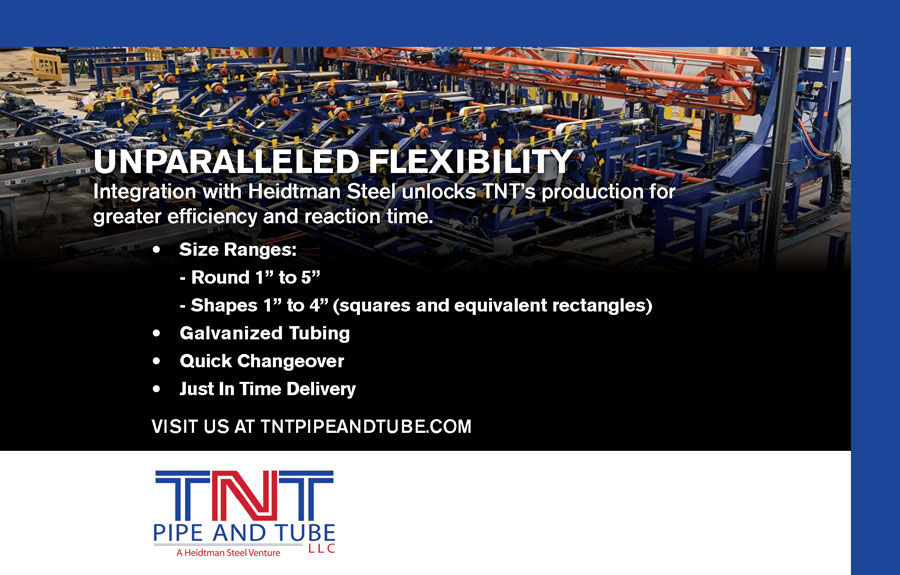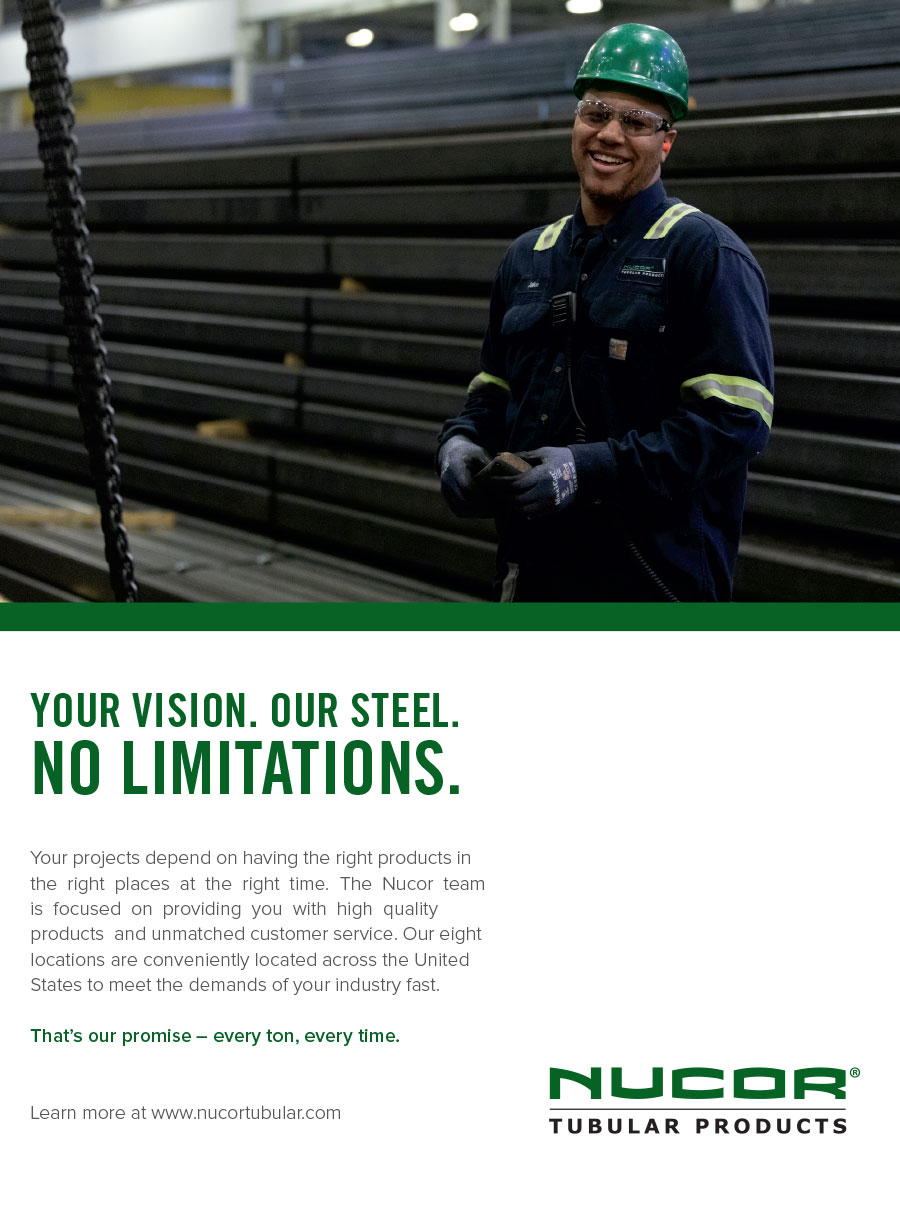Ahead
everal methods and types of machinery will help a metals processor or fabricator to cut a pipe and prepare it for welding: Laser, cold saw, band saw, abrasive saw, lathe cutting, shearing and CNC plasma cutting.
Ahead
everal methods and types of machinery will help a metals processor or fabricator to cut a pipe and prepare it for welding: Laser, cold saw, band saw, abrasive saw, lathe cutting, shearing and CNC plasma cutting.
“The next generation of plasma cutting machines performed better by using shield gases, creating less dross and less edge bevel,” Turner says. Even so, a 3- to 5-degree bevel may still have to be ground in order to butt weld the ends.
Laser machines will cut pipe almost perpendicular, but such work is limited by bandwidth. “Plasma is still faster on 1/2-inch-thick material and even on 3/8 inch when compared to lower-wattage lasers.”
Although plasma may be seen as older technology compared to laser, CNC cutting combined with Hypertherm XPR plasma (forcing gas through a narrow nozzle and adding an electrical current to superheat the gas), the edge bevel can be reduced to 1 to 2 degrees. According to Turner, that is considered within the same ISO range as laser. “Plus, you achieve better cut quality, less dross and there is virtually no cleanup on the new XPR plasma systems.”
 each customer must select a machine that delivers what they need it to do.
each customer must select a machine that delivers what they need it to do. 

 each customer must select a machine that delivers what they need it to do.
each customer must select a machine that delivers what they need it to do. 
Users can customize their machine’s capabilities across a wide variety of technical specifications. Operators can program for a variety of cuts, miters, copes, slots, saddles, hillsides and more.
The Hornet’s headstock design lets operators easily align and center pipe for cutting with adjustable three- or four-jaw chuck.

Hornet recently sold a Roto Combo package to a customer that fabricates stainless steel for structural applications. “It demonstrates the value of combining flat plate and structural tube processing. Things are starting to pick up after the initial COVID-19 lull,” Turner says.
He elucidates further advantages that plasma offers. “The edge quality on plasma in terms of smoothness is equal to or even better. A laser kerf creates a very fine line. Most customers don’t care about that because they are bending, rolling or welding the part.” Others may not need that fine of a kerf.
Almost all pipe and tube products are cut and something further is done to them, says Turner. “[Parts] will go into stair rail, or transportation or oil or water applications. Square tubes go into building construction.”
In contrast to a band saw, a plasma system can perform all kinds of cuts, and the product can immediately be moved to a welding operation. “You don’t have to change miter cuts for each part. Also for plasma, you can do layouts. You can do part markups and label part numbers.
For example, an operator can take a 4-inch tube and mark layouts for the welded railing “The plasma cuts the tube and then lays out the 2-inch square for the smaller railing. The plasma will use an argon marking process. That eliminates traditional cost of manually laying it out and it comes out of the machine exactly as it was drawn, eliminating measurement or layout error.”
That, says Turner, “increases quality and productivity and demonstrates the multiple benefits of using these kinds of machines.”
Hornet Cutting Systems builds its own racks for loading machines, but many of its fabrication shop customers make their own racks. “This is a value add for those who want it. Our idea is always to add value for our customers,” says Turner.
“For any manufacturing business, whether you work on plate, tube or pipe, it is staged and then goes to a cutting machine, then welding, then part layout, then assembly. If that first-process machine, such as a plasma cutting machine, doesn’t work properly, it can shut the whole factory down,” Turner emphasizes. “So each customer must select a machine that delivers what they need it to do. We want to give customers the ‘easy button.’”


